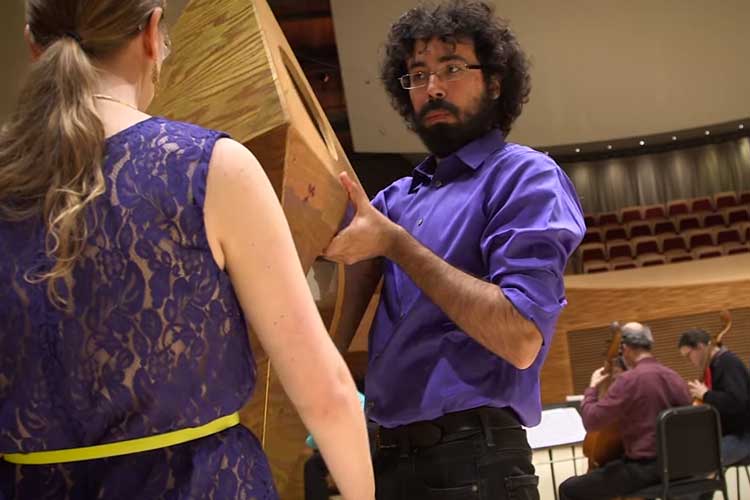Explore
Brain stethoscope for epilepsy
Transforming recordings of brain activity into music produces a powerful biofeedback tool for identifying brain patterns associated with seizures.
Read more
Rodin's sculptures diagnosed at the Cantor
A hand surgeon diagnoses malformations and diseases in the hands of sculptures by Auguste Rodin, uniting medical science with the artistry of sculpture.
Read more
Drones map the oldest coral
Camera-equipped flying robots promise new insights into the effects of climate change on ancient and important coral colonies.
Read more
Migration and language linked
Comparisons of populations' genetic differences and linguistic changes reveal a link between human migration out of Africa and the evolution of languages.
Read more
Dancing around 'synesthesia'
Dancers, musicians and spoken word artists learn to put their talents together with jazz master William Parker and each other.
Read more
Poetry slam for computer code
A high-tech poetry competition explores the creative aspects of computer programming with multimedia, poetry and executable code.
Read more
Animals in literature
The Western world's changing relationship with animals, as seen in a literature exhibit, could explain our stewardship of the natural world.
Read more
Carleton Watkins photo exhibition
Cartographic visualizations provide dynamic context for the geography and natural history behind the 19th-century photos.
Read more
Students explore civil rights movements in Hairspray
A student-run theatrical society explores racial integration against the background of an inventive LED set.
Read more
Map of the West
An interactive digital model of post offices in the U.S. West paints a dynamic picture of the region's changing population density and distribution.
Read more
Performance at the preserve
Visiting artist Ann Carlson brings dance, choreography, theater, visual art and performance art to an unlikely stage – Stanford's Jasper Ridge Biological Preserve.
Read more
Ancient medical care
An analysis of written artifacts combined with a study of skeletal remains creates a detailed picture of care and medicine in the ancient world.
Read more
'Drawing orchestra' and a frustrated icosahedron
Stanford physics community artfully uses tetrahedra to create a less-than-perfect structure that explores the connection between shape and sound.
Read more
Earliest US Website
Stanford University Libraries has restored some of the earliest web pages, making them available again for the first time since the early 1990s.
Read more
Politics of groundwater
A historical analysis of agrarian reform and hydraulic technology reveals how business interests put Mexico's groundwater supply on a path of unsustainability.
Read more
Science of superheroes
A biologist explains how the iconic comic book characters Captain America and the Incredible Hulk came to possess their superpowers.
Read more
Dancing with Parkinson's
Faculty and students explore approaching Parkinson's disease with intentional movement.
Read more
Telling stories about oceans
'Visualizing the Oceans' project underscores the importance of narrative in creating connections between humans and fragile ocean environments.
Read more
Literature shapes medicine
Novelists have played a crucial role as advocates-in-fiction in the development of tropical medicine and global health.
Read more
Evolutionary theory for language
The combination of data mining, literary analysis and evolutionary biology reveals the literary roots of Portuguese language evolution in 19th-century Brazil.
Read more
Marine biologists search for the world's strongest coral
Computer-controlled stress tanks help identify hardy coral that will be able to survive the planet's increasing temperatures.
Read more
Addiction policies from neuroscience
Better policies for treating and preventing addiction may come from what neuroscientists are learning about how the brain makes decisions.
Read more
Honing the art of observation, and observing art
Medical school course brings students to campus museums and galleries to practice close observation of art, and to learn how to translate those skills to a clinical setting.
Read moreSexual avatars alter perceptions
After women wear sexualized avatars in a virtual reality world, they feel objectified and are more likely to accept rape myths in the real world.
Read more
Molecular physics through movement
Stanford collaborators fuse cutting-edge art with research-grade science.
Read more
Groundbreaking theater technology in the making
A student develops a digitally operated remote control follow spot for Les Misérables.
Read more


